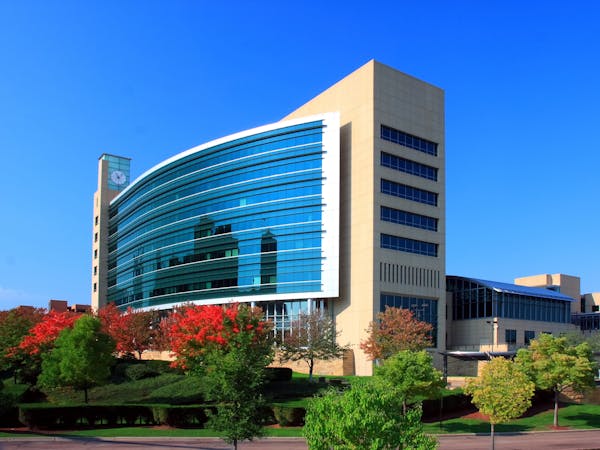Most newly vaccinated Minnesotans bypassed the state's COVID-19 vaccination incentive program, with only 13% of those eligible registering to receive one of nine rewards.
In late May, Gov. Tim Walz announced the program as a way to boost anemic vaccination rates. Up to 100,000 rewards, including State Fair tickets and fishing licenses, would be given to those who got their first dose in June.
About 135,000 first doses were administered last month, yet just 17,409 people requested a reward through a state website.
The most popular reward was money, with 57% choosing a $25 Visa gift card.
While the deadline for requesting the incentives has passed, the state is "continuing to identify other opportunities to encourage Minnesotans to get their vaccine and to thank them for doing so," according to state spokesman Devin Henry.
Several states have launched vaccination incentives, but it is unclear whether they are making a significant impact.
Ohio's $1 million vaccination lottery did not increase adult vaccination rates, according to a study published last week in the JAMA medical journal. However, the vaccination rates in Ohio did not slow as much as in the rest of the country.
"Further evidence supporting the effectiveness of lotteries as strategies for increasing vaccine uptake are needed prior to widespread and potentially costly adoption," wrote the study's authors from Boston University School of Medicine.
At least 16 other states have set up lotteries with an array of prizes, including cash and school tuition, being awarded to those who become vaccinated, but some have had mixed results. Ohio initially saw a jump in vaccinations when the lottery was first announced in May, but that also coincided with expanding eligibility for the Pfizer vaccine to those 12 to 15. Vaccinations dropped soon after.
Altogether, 26 states have some type of COVID-19 vaccination incentive campaign, according to the National Governors Association.
Alabama offered residents the opportunity to drive two laps at the Talladega Superspeedway. Delaware was offering free tolls on state highways and low-number license plates, among many other incentives.
Passes to state parks, fishing and hunting licenses, sports tickets, amusement park passes and free or discounted meals were among the more common freebies that were offered.
Minnesota's incentive program did reach groups that have been lagging in vaccine uptake, with 80% of those requesting an incentive younger than 49.
"This program was popular with younger Minnesotans, an age group we're aiming to vaccinate," Henry said.
Some of the highest per capita incentive request rates were in rural counties, where vaccination rates tend to be lower. Also, half of the requests came from the 420 ZIP codes that score highest on the social vulnerability index, meaning that residents there are most at risk during public health emergencies.
Minnesota has met President Joe Biden's goal of getting first doses to more than 70% of adults. Vermont has the highest percentage at 85.6%; at 70.2%, Minnesota is ahead of 30 other states.
The state is still just short of meeting its goal of giving the COVID-19 vaccine to 70% of those age 16 and over, with 67.3% having received at least one dose.
Nearly 3.1 million Minnesotans have gotten at least one shot, and 2.9 million are fully vaccinated.
The pace of vaccinations has slowed since it peaked in April, when 1.6 million doses were administered. The biggest jump in new first doses happened on April 9, when 56,476 shots went into arms.
By comparison, 3,160 new daily first doses were reported as of Tuesday, according to the Minnesota Department of Health.
State health officials also announced 127 new COVID-19 cases along with two deaths, bringing the state's pandemic total to 606,158 infections and 7,617 fatalities.
Since last week, Minnesota has seen 710 new confirmed COVID-19 cases and 18 deaths. Nearly 60% of the new infections were in the seven-country metro area, with the rest scattered among 56 other Minnesota counties. Case growth in all counties is less than 1%.
Diagnostic laboratories reported 9,251 COVID-19 test results to the state Health Department as of Wednesday. That's a rebound from the Independence Day holiday, when an average of 5,800 test results were reported each day from July 4 to July 6.
The state's test positivity rate stands at 1.2%.
Minnesota hospitals were caring for 93 patients with COVID-19 complications, including 23 in intensive care. On average, there were 98 COVID-19 patients each day since July 1.
The federal Centers for Disease Control and Prevention estimates that the highly transmissible delta variant accounts for more than half of the new cases in the United States.
Minnesota health officials say that the delta variant, first identified in India, has been detected in 110 cases, with 34 new cases since June 24.
The alpha variant, which was first identified in the United Kingdom, has been linked to nearly 17,800 cases in Minnesota, with 134 cases detected since June 24.
Not all cases undergo the laboratory work necessary to identify the variant types. Health officials caution that the number of variants detected does not tell the full picture of variant transmissions across the state.
Minnesotans can still take advantage of other vaccination incentive programs.
Walz announced last week a partnership with Sun Country Airlines. People receiving a COVID-19 vaccine at the vaccine clinic in Terminal 2 of the Minneapolis-St. Paul International Airport can enter a weekly drawing for a $500 travel voucher. That program runs through Aug. 7.
Glenn Howatt • 612-673-7192
Twitter: @GlennHowatt

This St. Paul native now goes by Kandi Krush, and she body-slams her opponents in the ring

Baseball Metro Player of the Year packs up his five tools and leaves

Prep baseball 2024: 35 Minnesota stars who the recruiters covet
Police searching for St. Paul home intruder who raped, robbed woman

